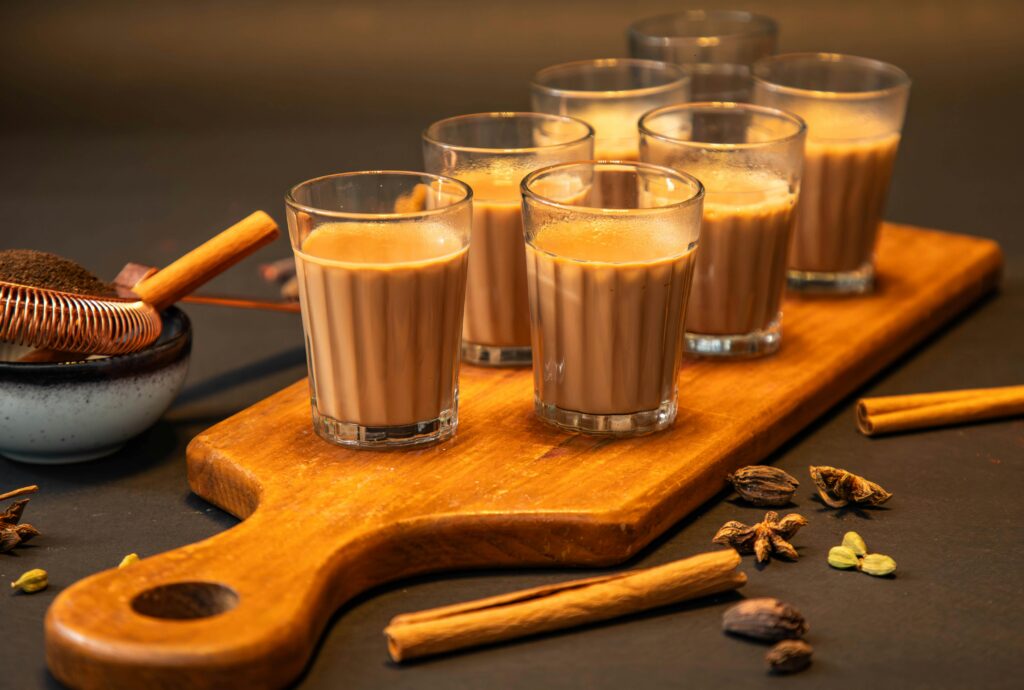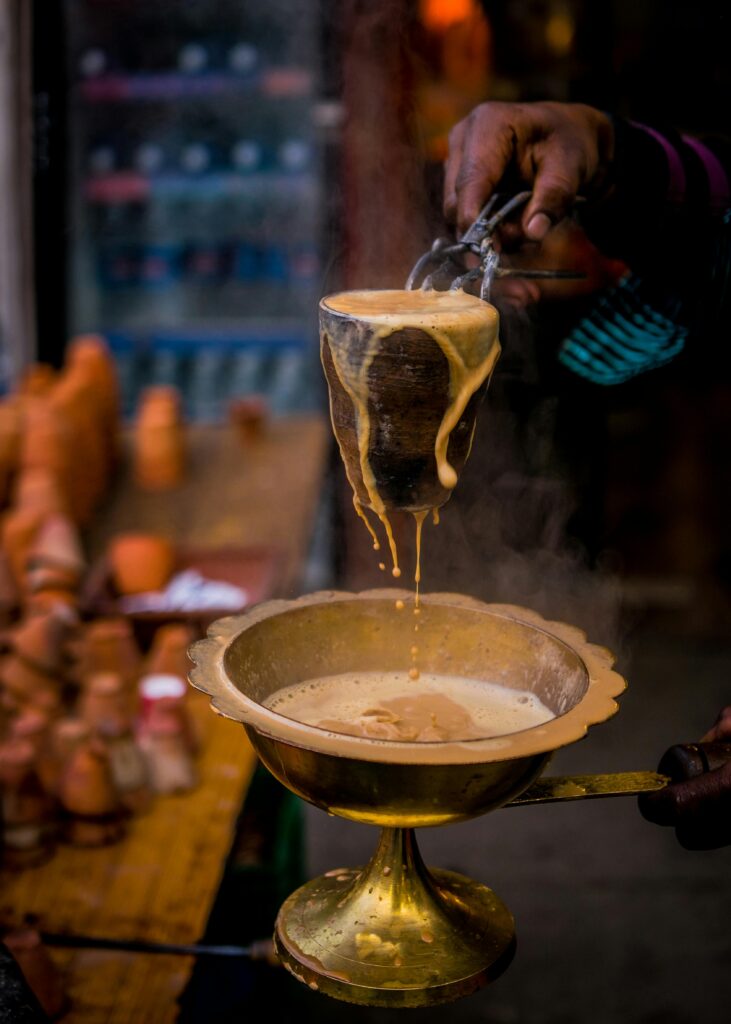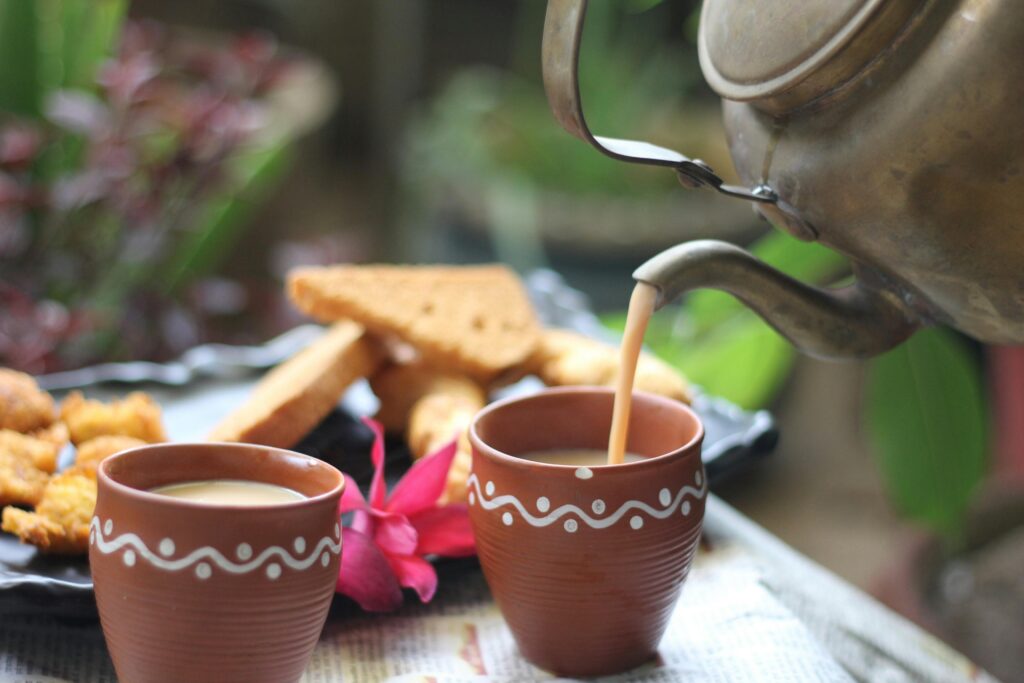Tea is more than just a drink in South Asia—it’s a cultural heartbeat. Both Pakistani Chai and Indian Chai have captured global attention for their strong flavors and vibrant traditions. While they share roots in the same subcontinent, the two varieties have evolved differently, shaped by history, geography, and culture. In this article, we’ll explore the taste, preparation methods, cultural significance, and traditions that set Pakistani Chai apart from Indian Chai.

The Origins of Chai in South Asia
Tea was introduced to the Indian subcontinent during the colonial era when the British established large tea plantations in Assam and Darjeeling. Over time, locals transformed tea drinking into something unique—adding milk, sugar, and spices. What started as an imported habit soon became deeply embedded in daily life.
In both Pakistan and India, chai quickly became more than a beverage; it grew into a symbol of hospitality, social bonding, and national identity.
Taste Profile: Pakistani Chai vs Indian Chai
| Feature | Pakistani Chai | Indian Chai |
|---|---|---|
| Base Flavor | Strong, milky, smooth | Spiced, bold, aromatic |
| Common Spices | Minimal spices (sometimes cardamom) | Masala blend (ginger, cloves, cinnamon) |
| Sweetness Level | Medium to high | Varies, often moderately sweet |
| Texture | Creamy and rich | Spiced and layered |
Pakistani chai, especially Doodh Patti, is tea brewed directly in milk, giving it a creamy texture and strong flavor. Indian chai, particularly Masala Chai, incorporates spices like ginger, cinnamon, cloves, and cardamom, making it more aromatic and layered in taste.
Preparation Methods
- Pakistani Chai: Typically prepared with more milk than water. Tea leaves are boiled with sugar and milk until the desired richness is achieved. The result is a smooth, creamy, and comforting cup.
- Indian Chai: Commonly made with a balance of water and milk. Spices are simmered with the tea leaves before milk and sugar are added, creating a complex and aromatic blend.
Both versions are served piping hot, often in small cups or glasses.
Cultural Significance
In Pakistan, chai is deeply tied to hospitality. Offering chai to guests is a must, whether in homes or roadside dhabas. Even business meetings often start with a cup of tea. Chai represents warmth, generosity, and togetherness.
In India, chai holds a similar role but is also celebrated as a street culture icon. The concept of the “chaiwala” (tea vendor) is part of everyday life. Indian chai stalls are vibrant social spaces where people from all walks of life gather for conversation and connection.
Traditions and Rituals
- Pakistani Traditions:
- Served during weddings, Eid gatherings, and winter evenings.
- Popular varieties include Doodh Patti Chai, Kashmiri Chai (pink tea), and Elaichi Chai (cardamom tea).
- Winter evenings often include chai with snacks like pakoras or samosas.
- Indian Traditions:
- Chai is enjoyed throughout the day, often paired with biscuits or savory snacks.
- Regional variations include Masala Chai, Adrak Chai (ginger tea), and Darjeeling Chai.
- Chai is also linked to Indian train journeys, where vendors call out “Chai, Chai!” across platforms.
Pakistani Chai vs Indian Chai in Global Culture
With the South Asian diaspora spread across the world, chai has crossed borders. Cafés in the West often label Indian spiced tea as “Chai Latte”, but this version is far from authentic. Meanwhile, Pakistani chai cafés are gaining popularity, introducing international audiences to Doodh Patti and Kashmiri Chai.
Health Benefits of Both
- Boosts energy thanks to caffeine.
- Aids digestion, especially spiced Indian chai with ginger and cardamom.
- Promotes relaxation, particularly Pakistani Kashmiri Chai with almonds and pistachios.
- Antioxidant-rich, helping to fight free radicals in the body.
FAQs About Pakistani Chai vs Indian Chai
1. Is Pakistani chai stronger than Indian chai?
Yes, Pakistani chai (like Doodh Patti) is usually stronger and creamier due to higher milk content.
2. Which is healthier: Pakistani chai or Indian chai?
Both have benefits, but Indian Masala Chai may offer more digestive health perks because of spices.
3. Why is Indian chai spicier than Pakistani chai?
Indian chai evolved with Masala blends, while Pakistani chai focuses more on milk-tea richness than spice.
4. Can I make Pakistani chai without milk?
Not really. Milk is central to Pakistani chai. Without it, the taste won’t be authentic.
5. What’s the biggest cultural difference?
In Pakistan, chai is about family and hospitality, while in India, it’s both a family ritual and a lively street culture.

Conclusion
Both Pakistani Chai and Indian Chai are deeply beloved, yet they represent different cultural flavors. Pakistani chai leans towards creamy, rich, and comforting brews, while Indian chai celebrates spice, aroma, and vibrancy. Together, they highlight the diverse ways tea unites people across South Asia.
Whether you prefer the smoothness of Pakistani Doodh Patti or the spice of Indian Masala Chai, one thing is clear: chai isn’t just a drink—it’s an emotion.
For more cultural insights into chai, you can explore resources like Tea Epicure, which dives deep into global tea traditions.
read more:
- Pakistani Chai Explained: History, Culture & Recipes
- tea for beginners
- pakistani vs indian chai
- types of chai
- chai in literature
- chai in subcontinent
- Karak or Masala Chai: Which One’s better?
- masala chai
- From Clay Pot to Cup – The Story of Pakistan’s Matka Chai
- Pakistani Tea Guide: Doodh Patti vs Chai
- Make Perfect Pakistani Chai – A Recipe Loved for Generations
- Why Chai Is More Than Just Tea in Pakistan
- Essential Chai Accessories Every Tea Lover Needs
- Top Chai Amazon Products You Must Try in 2025
- Authentic Kashmiri Pink Tea Recipe You Must Try
